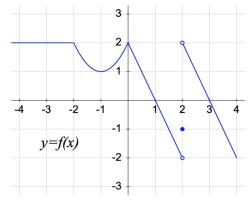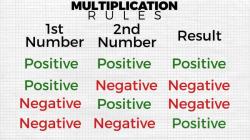How do you solve an equation?
Solving an equation involves finding the values of the variable(s) that make the equation true. Whether you're dealing with a simple one-step equation or a more complex equation, the general approach remains the same. Here's a step-by-step guide on how to solve equations:
Step 1: Understand the Equation
- Carefully read and understand the equation, identifying the variable (usually represented by a letter, such as ), constants, coefficients, and operations (addition, subtraction, multiplication, division, etc.).
Step 2: Isolate the Variable
- Your goal is to isolate the variable on one side of the equation. To do this, perform operations on both sides of the equation to simplify and isolate the variable.
Step 3: Perform Operations
- Perform inverse operations to isolate the variable. If an operation is applied to one side of the equation, apply the same operation to the other side to maintain equality. Common inverse operations include:
- Addition and subtraction (adding or subtracting the same value to both sides)
- Multiplication and division (multiplying or dividing both sides by the same value)
- Exponentiation (raising both sides to the same power)
Step 4: Simplify
- Simplify the equation as you perform operations. Combine like terms and follow the order of operations (PEMDAS/BODMAS) when necessary.
Step 5: Check for Extraneous Solutions (if applicable)
- In some cases, after simplifying the equation, you may need to check for extraneous solutions. These are solutions that, when plugged back into the original equation, do not make it true. Extraneous solutions often arise when square roots or other non-linear functions are involved.
Step 6: Solve for the Variable
- Continue isolating the variable until you have it on one side of the equation by itself. The result is the solution to the equation.
Step 7: Express the Solution
- Express the solution as a single value or a set of values, depending on the equation. The solution may be a single number, a range, or a set of numbers that satisfy the equation.
Step 8: Check the Solution
- Substitute the solution back into the original equation to ensure that it makes the equation true. If it does, the solution is verified as correct.
Step 9: Finalize the Solution
- Review your work to make sure you have solved the equation accurately, and consider any special cases or restrictions on the variable that may apply.
Step 10: Express the Solution in Plain Language (if necessary)
- If you need to explain the solution in everyday language or in the context of a problem, do so for clarity.
Here's an example of solving a simple linear equation:
Example: Solve the equation .
Step 1: Understand the Equation.
- Variable:
- Constants: 5 and 11
- Operations: Addition
Step 2: Isolate the Variable.
Step 3: Perform Operations.
Step 4: Simplify.
Step 5: Check for Extraneous Solutions.
- Not applicable in this case.
Step 6: Solve for the Variable.
- Variable is already isolated.
Step 7: Express the Solution.
Step 8: Check the Solution.
- Plug back into the original equation: , which is true.
Step 9: Finalize the Solution.
- Review the work to ensure accuracy.
Step 10: Express the Solution in Plain Language.
- The solution is , which means that when is 3, the equation is true.
Fundamental steps for solving equations in mathematics
The fundamental steps for solving equations in mathematics are as follows:
- Identify the like terms. Like terms are terms that have the same variables and exponents.
- Combine like terms. Once you have identified the like terms, you can combine them by adding or subtracting the coefficients.
- Isolate the variable. To isolate the variable, you need to get it by itself on one side of the equation. You can do this by adding or subtracting numbers and terms to both sides of the equation.
- Solve for the variable. Once you have isolated the variable, you can solve for it by dividing both sides of the equation by its coefficient.
The algebraic process of isolating variables and finding solutions
The algebraic process of isolating variables and finding solutions involves using the following steps:
- Identify the variable that you want to solve for.
- Use algebraic operations, such as addition, subtraction, multiplication, and division, to isolate the variable on one side of the equation.
- Solve for the variable by dividing both sides of the equation by its coefficient.
Solving linear, quadratic, and other types of equations
There are different methods for solving different types of equations. For example, linear equations can be solved using the following steps:
- Combine like terms.
- Isolate the variable.
- Solve for the variable.
Quadratic equations can be solved using the following methods:
- Factoring: This method involves factoring the quadratic expression and solving for the variable.
- Completing the square: This method involves completing the square in the quadratic expression and solving for the variable.
- Quadratic formula: This method involves using the quadratic formula to solve for the variable.
Other types of equations, such as exponential and logarithmic equations, can be solved using a variety of methods, such as factoring, graphing, and using mathematical formulas.
Problem-solving techniques and critical thinking in equation solving
When solving equations, it is important to use problem-solving techniques and critical thinking. This means understanding the problem, identifying the relevant information, and choosing the appropriate method for solving the problem.
Some problem-solving techniques that can be used when solving equations include:
- Guess and check: This method involves guessing a solution to the equation and then checking to see if it is correct.
- Trial and error: This method involves trying different values for the variable until you find a solution that works.
- Working backwards: This method involves starting with the solution and working backwards to find the equation.
Critical thinking is also important when solving equations. This means being able to identify and analyze different methods for solving the problem, and choosing the method that is most likely to be successful.
Real-world applications of equations and problem-solving skills
Equations are used in many different real-world applications. For example, equations can be used to:
- Calculate the cost of goods and services.
- Determine the distance between two points.
- Find the speed of an object.
- Solve for the unknown in a chemical equation.
- Design and analyze engineering structures.
Problem-solving skills are also essential for many real-world applications. For example, problem-solving skills can be used to:
- Make informed decisions about financial investments.
- Develop and implement business strategies.
- Design and conduct scientific experiments.
- Diagnose and treat medical conditions.
- Solve complex social and environmental problems.
Overall, solving equations and using problem-solving skills are essential skills for success in many different fields.












